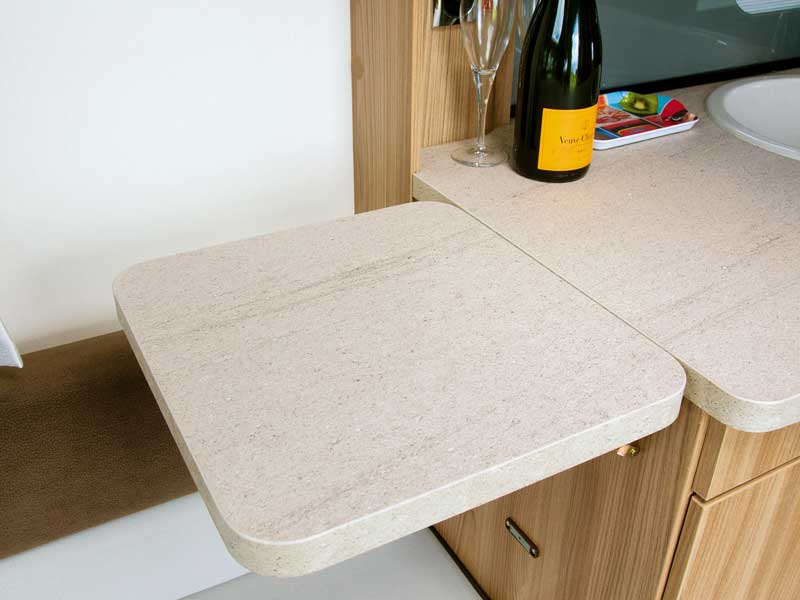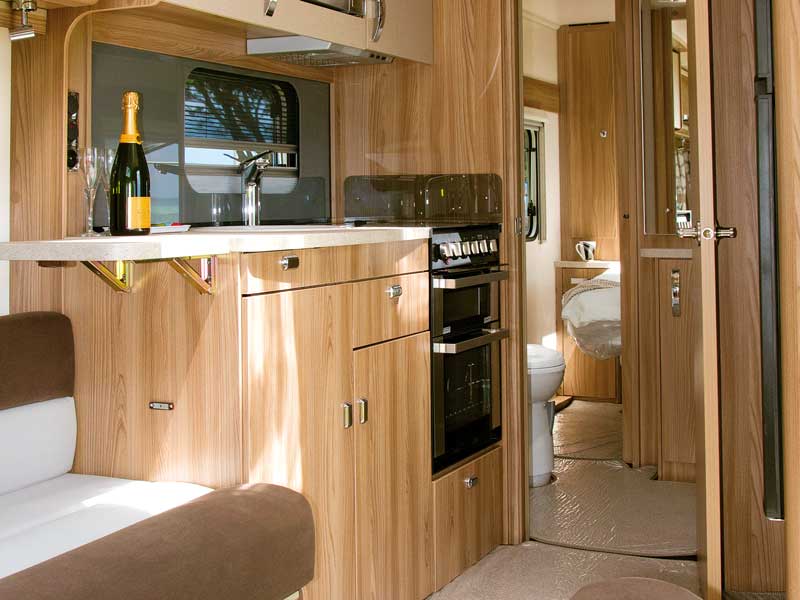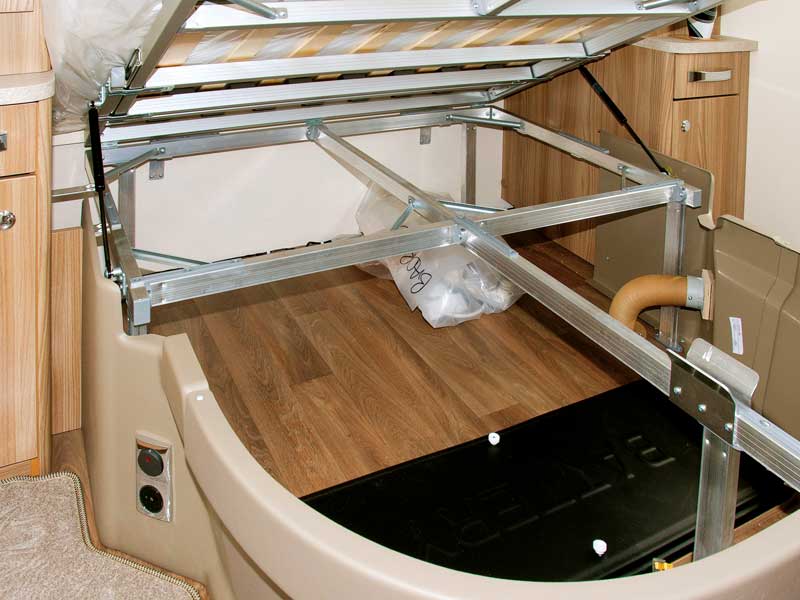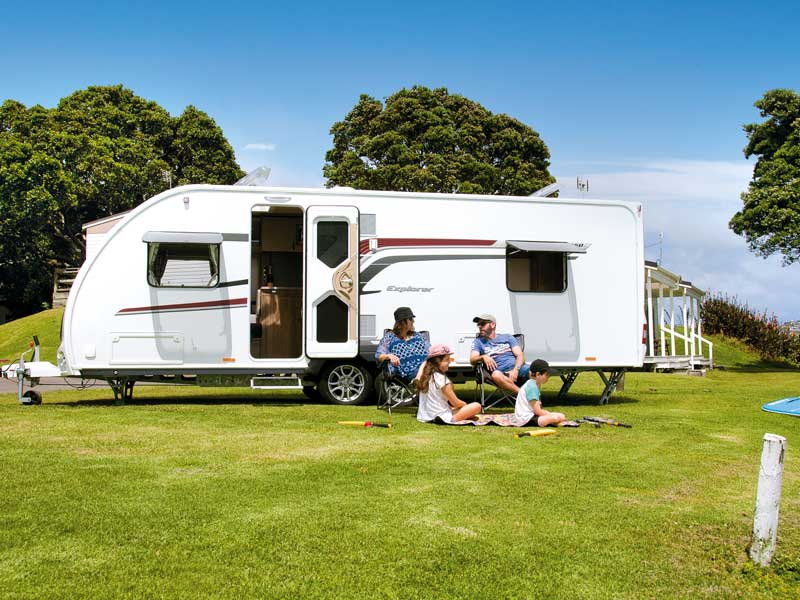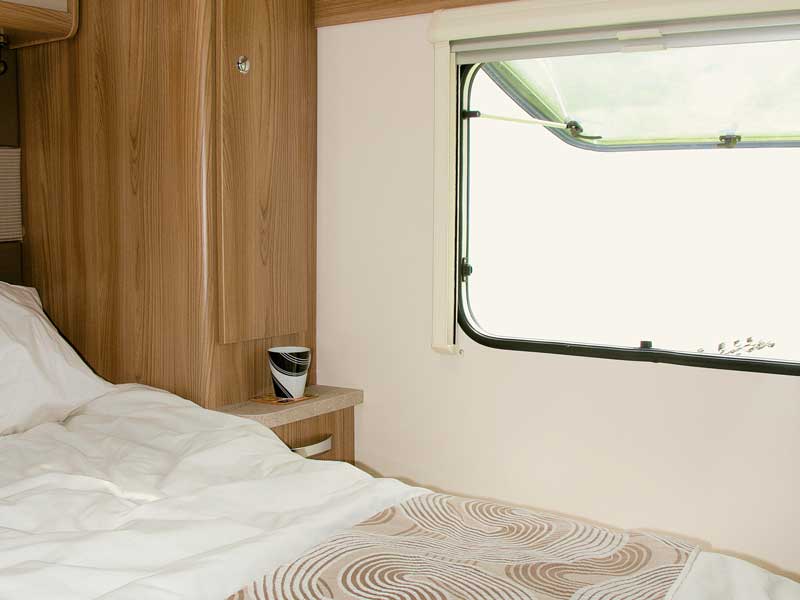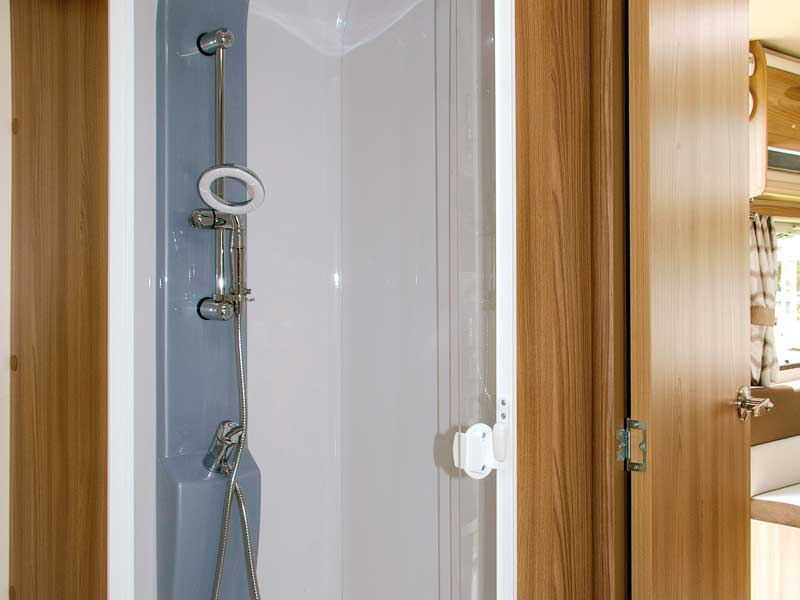Until recently, Explorer caravans were Swift’s ‘top-of-the-line’ range. Marketing ideas change and Swift adopted Elegance as their premier product name. The name ‘Explorer’ sat quietly unused until the marketers sought a title for a new range of caravans developed especially for the Australian market.
There are five models available, from the Explorer 560 through to the Explorer 650, the model under review. Merit RV’s Nathan Butler recognised that the features added to suit the Australian market made it ideal for Kiwis as well and jumped at the chance to gain exclusive rights to import the Explorer range into New Zealand.
FIRST IMPRESSIONS
At first glance, it seems the same as other Swift caravans but after taking a walk around the caravan, you realise there is more to the Explorer than meets the eye. For a start, it is mounted on a twin axle ALKO extra heavy-duty chassis with ATC (Auto Trailer Control) fitted as standard. It has a 2000kg GVW rating. As well as the larger payload, the heavier chassis provides 100mm additional ground clearance.
Up front on the tow hitch is a feature rarely seen on Kiwi caravans—a pair of lugs that are a component part of all-Aussie stabiliser bar/ leveller set-ups. Further investigation uncovers what appears to be an extra toilet cassette hatch door that, when opened, reveals an outside TV connection point complete with an extending swing-arm mounting bracket.
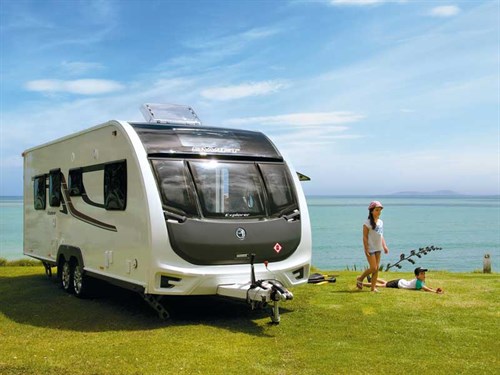
Swift has mounted a pull out alloy step to overcome the extra 100mm of ground clearance, and a Dometic door and security fly screen that is 100mm wider, making access just that much easier. The comprehensive waterworks package includes a single entry point for the dual-purpose water inlet. Flip the switch one way for mains pressure to the on-board taps or the other way to fill the on-board fresh water tank. There is also an external fill point for the toilet flush-water tank. When you add in an LPG point for the BBQ and an external shower, you realise this is different from your average British-built caravan.
LAYOUT
The Swift Group is the largest manufacturer of caravans in the UK. They have been doing it for a long time now and have perfected the formula. Their caravans have a particular feel, look, and layout, and the Explorer remains faithful to that formula. The feel is ‘homely’ created by layering components on to components, creating shelves and spaces that allows the owner to personalise the interior. The look is both contemporary with high-gloss lacquer locker doors and conservative in its colour palette of brown autumn tones.
The layout is typically British with a pair of settees facing one another and a cabinet between them at the front of the caravan, creating a lounge that you can eat in rather than a dinette that you entertain in, as is the case with most European- and Australian-built caravans. There is useful storage beneath both settees and in the three overhead lockers. With an opening window both sides and three across the front with a fixed panorama hatch and a wind up opening hatch above, it is an extremely light and airy entertainment area.
KITCHEN
One thing Aussie owners demand is a big fridge/freezer that is efficient. Swift has answered the call and installed a 190-litre ‘tropical’ rated Dometic with separate fridge and freezer doors opposite the kitchen bench. This gives space below the bench for a pair of cupboards and a pair of cutlery drawers. Along with two overhead lockers, there is adequate storage space for food, crockery, pots, and pans. And if you need more, there is a high and a low cupboard suitable for tall bottles beside the entry door.
The cook-top houses four hobs—one electric and three LPG—and is mounted beside a round sink, leaving a small but workable section of the bench-top free for meal preparation. Flip up the nifty bench-top extension to double this space. An extractor fan is mounted above the hobs and a full Thetford Caprice Mark3 oven with separate grill is mounted below. Should you be connected to the mains power, you can use the microwave oven mounted between the overhead lockers above the bench.
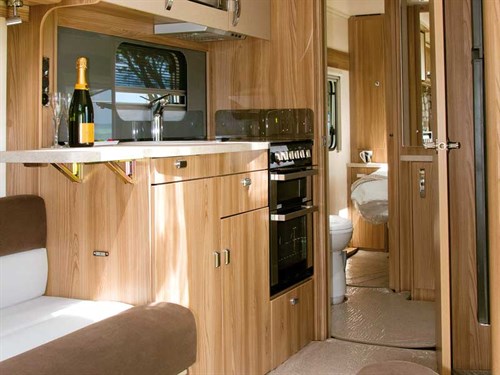
A solid wooden door separates the lounge/kitchen area in the front half of the caravan, from the bathroom/bedroom in the back. This separation is so complete, it reminded me of two carriages in a train.
BATHROOM
First stop through the door is the bathroom. The toilet is on the left. Go on past through a sliding door to the left-hand side of the island bed, or alternatively, go right past the shower as you enter and through another sliding door to the right-hand side of the bed. There is enough room that there is no need to step into the shower space to pass through.
Mounted on the wall between the sliding doors is a bench-high cabinet with mirror above. The handbasin is not mounted on the cabinet but on another cabinet beside the toilet. There are more cupboards above the toilet and below the handbasin.
A curved solid acrylic door encloses the shower but otherwise there are no embellishments—no soap dish, shampoo shelves, or hanging rail for drying clothes. This is a pity, as Swift has installed hot air vents, making the bathroom an ideal place for drying clothes. Overall, for layout, space, and usability, this rendition of a ‘separation bathroom’ is up there with the best I’ve seen in an RV. It is certainly not a compromise.
BEDROOM
The wall at the foot of the island bed gives the occupants privacy and is the ideal location for the bedroom TV, so it is pre-wired for this purpose. The bed looks bigger than its Swift predecessors. Measuring up at 1850 x 1450mm, it is 110mm wider. The mattress and sprung slat base lift easily, thanks to gas strut assistance to access the space beneath, practically all of which is available for storage. Keep in mind when using this space that the house battery compartment is below floor level at the foot of the bed. There is a wardrobe each side with a cabinet beneath so there is adequate space for clothes and other personal items. Ventilation and light are taken care of with an opening window each side and a windup hatch in the roof.
LED lights are used throughout the Explorer. Whether used for general ceiling lighting as they are in the lounge, as spotlights as in the kitchen, for special effects such as the splash-back over the bench, or as reading lights in the bedroom, they create pleasing effects, offer practical light, and are ever so economical to run.
FREEDOM CAMPING
With its extra ground clearance, freedom camping in less accessible places is a genuine possibility for the Explorer 650. Its heavy-duty chassis means it can cope with a greater than normal payload.
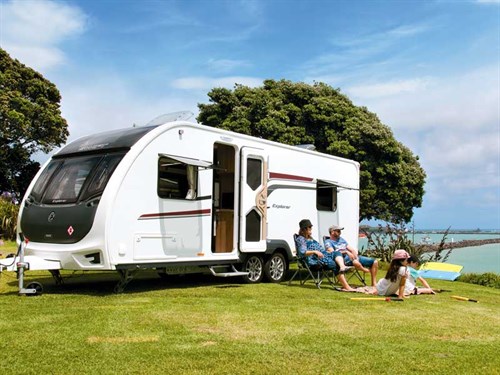
Monitored fresh and grey water tanks (120 litres each), a large fridge/freezer, a 120 watt solar panel with an MPPT regulator, and 2 x 120amp hour AGM house batteries should provide at least a week’s camping ‘off the grid’.
Nathan also provides for your entertainment by fitting each Explorer 650 with an LED TV, a stereo system, a satellite dish, and signs off the paperwork with NZMCA self containment certification and the relevant gas and electrical certificates. To ensure your towing vehicle connects seamlessly to your new caravan, Merit RV matches up the tow vehicle and caravan 12-volt wiring to power up the caravan’s Alko ATC system, as well as charge the house battery and run the fridge while the vehicles are under way. They will even supply your tow vehicle with the correct 50mm Alko tow ball. And to give you a chance to bed the new systems in and make sure nothing is wrong, they throw in two nights stay at a nearby campground.
VERDICT
Swift caravans are a long established, well-known brand. Nathan Butler of MeritRV is a thoughtful, conscientious dealer. It is a winning combination for those looking to buy a new caravan. As reviewed, the Explorer 650 retails for $76,995.



